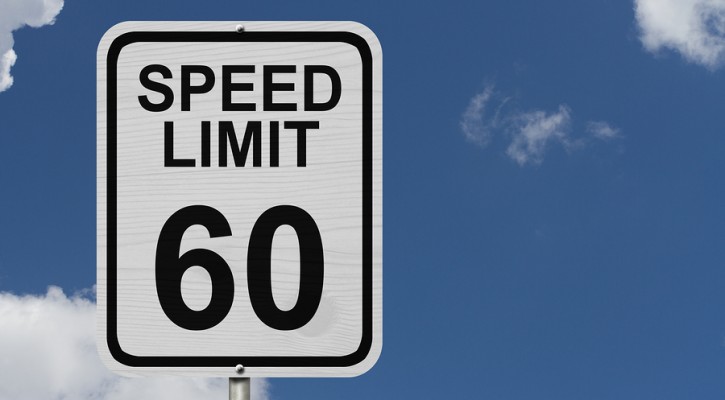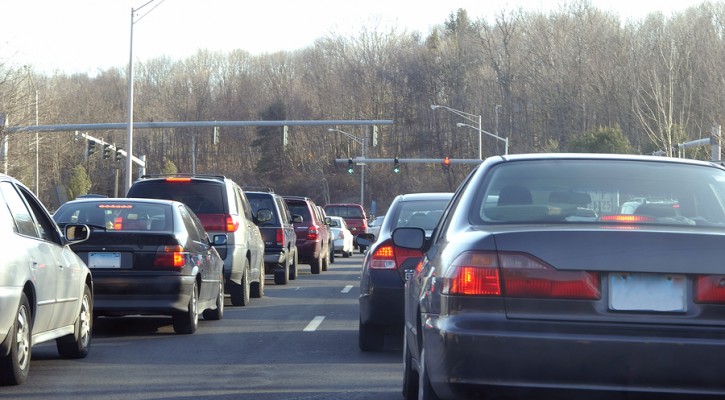Tag Archive: rules of the road

You Never Know
March 19, 2015
You never know what you may encounter on the roadway. Along with other traffic and pedestrians, drivers need to be aware of the possibility of horses and livestock on the road. A crash near Jacksonville Florida yesterday points out the necessity of watching for the unexpected while driving.
A man was riding a horse along a country road north of Jacksonville when they were hit by a car. The driver said she didn’t see them initially but, when she did, she hit the brakes but it was too late. The man was thrown from the horse and received critical injuries. The injured and frightened horse ran out into the roadway where it was hit and killed by another car.
In Florida, as well as most other states, horseback riders have a right to use the roadways. Horseback riders along with pedestrians, cyclists, motorcyclists, and those who use personal mobility devices are considered to be vulnerable road users. The Florida legislature is currently considering a bill to strengthen the penalties for anyone who injures or kills a vulnerable road user by careless or negligent actions.
Drivers on country roads may think they have a clear and unobstructed road but can be surprised by what may be around the next curve. Last year, while driving I was driving on a country road in North Georgia, other drivers approaching me flashed their lights at me. Thinking they were warning me of a patrol car ahead, I didn’t worry because I was traveling within the speed limit. What they were really trying to warm be about was a calf that had escaped its enclosure and was wandering alongside the road.
If you approach a horseback rider or a wandering cow from behind, keep in mind that the animal itself can only see straight ahead. The animal may be unaware of your presence. Slow down and give the animal a wide berth. Never honk your horn. That could cause the animal to panic and run out into the road.
You don’t necessarily have to be on a country road to encounter horseback riders. As part of the you never know what to expect file, take a look at this recent news report from Atlanta.
Read more: Car strikes and kills horse; Rider in critical condition

Ask The Traffic School Instructor: Speed Limits
September 24, 2014
Question: Do speed limits reduce traffic accidents?
Answer: No, speed limits by themselves can’t save lives. However, drivers who obey the posted speed limits do save lives. Let’s look at the purpose of speed limits and then, at why speed is dangerous.
According to the National Highway Transportation Administration (NHTSA), approximately one-third of all highway traffic deaths are directly due to speeding. Speeding means either going faster than the posted speed limit or traveling too fast for conditions.
What’s the purpose of speed limits?
There’s a popular belief that speed limits are just a way for governments to raise income by handing out traffic tickets but that’s not the case. Speed limits are determined by traffic engineers and set by local or state governments. No one likes traffic jams so, when trying to determine a speed limit, traffic engineers are actually trying to determine the highest safe speed that will allow traffic to move freely. In order to do this, they have to look at a lot of factors including; size of the road, number of lanes, curves, hills, whether the roadway passes through a school zone, shopping district, etc.
Taking all of those factors into consideration, once a speed limit is set, it is the maximum speed allowed during ideal conditions. Ideal conditions mean clear visibility and dry roads. When there is heavy rain, snow or fog, it’s up to drivers to adjust their speed according to conditions. Even if a driver is traveling at or below the speed limit, it’s still possible to get a speeding ticket for driving too fast for conditions.
Why is speed a problem?
Reaction time
The higher the speed, the less time a driver has to react to an emergency situation ahead. It takes between 1 to 1.5 seconds for a driver to react to an emergency situation. That means a driver obeying a speed limit of 45 mph will travel approximately 99 feet before he or she can fully react. A driver traveling 10 mph over the speed limit will travel more than 121 feet in the same amount of time. A lot can happen in that amount of space.
Laws of Physics
The laws of physics come into play also. A basic law of motion states that an object in motion tends to remain in motion – in a straight line. A driver driving too fast in a curve stands a good chance of losing control and running off the roadway because, due to the laws of motion, it’s physically impossible to keep the vehicle on the road. Physics also come into play in a crash. The higher the speed, the greater the crash forces will be.
Reducing traffic Jams
Believe it or not, if everyone were to obey the speed limit and keep a safe following distance between their vehicle and the vehicle ahead, traffic would move much faster and more smoothly. Traffic jams are caused by drivers who are driving too fast and then hit the brakes when they approach a vehicle ahead. This causes traffic behind to hit the brakes and a traffic jam is the result.
You won’t get there any faster by speeding and yes, obeying the speed limit saves lives!

Ask The Traffic School Instructor: Using A Parking Lot To Avoid Traffic Signals
August 26, 2014
Question: If you’re at a red light and need to turn, is it illegal to avoid the light by cutting through a parking lot?
Answer: It’s very tempting – you need to turn right but you’re two or three cars behind the light and the drivers ahead are going straight. It would be so easy to just cut through the parking lot and exit onto your street but imagine if a whole line of cars were doing that every time the light was red.
It is against the law to cut through a parking lot to avoid a traffic signal. In Florida, this law is covered under Florida Statute 316.074 – Obedience to and required traffic control devices. If a law enforcement officer were to observe you doing this, you could receive a moving violation ticket. Almost all states have a similar law.
The only time it would be permissible was if you were directed to do so by a law enforcement officer. A situation where this could happen was if there were a traffic crash in the intersection and traffic was backed up. At that point, an officer might direct traffic through the parking lot to clear the traffic and keep it moving. However, before doing this, the officer would first have to decide whether or not the extra traffic might pose a danger to pedestrians or other traffic in the parking lot before allowing traffic to cut through. Situations like that would be very rare.
When you’re sitting at a red light, your sense of time can become distorted and every second spent waiting seems like five. If you were to actually time the length of a red light, you would probably find that the actual time spent was much shorter than it seemed. It’s better to just wait it out and avoid getting a ticket rather than avoiding the light.
